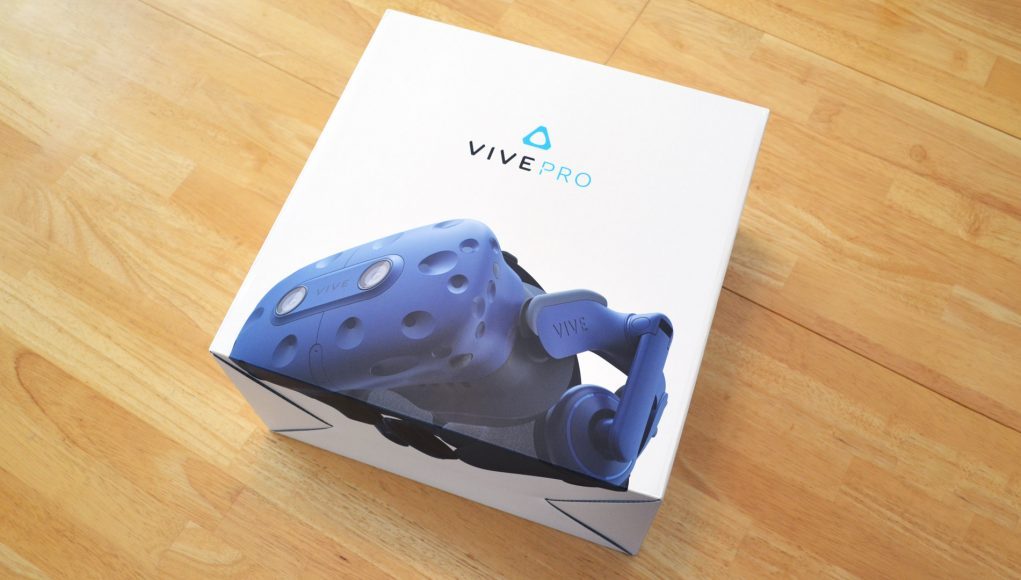Set to launch this week, on the two year anniversary of the original Vive, HTC’s Vive Pro shows the progress the company has been able to make on their VR headset in the same span, though it isn’t being positioned as a ‘Vive 2’. Bringing a number of welcomed improvements, but also a steep increase in price, the headset is only likely to make sense to enterprise and commercial users, and a tiny fraction of the VR enthusiasts that have already bought into HTC’s VR ecosystem. Even then, with SteamVR Tracking 2.0 base stations and controllers still not available to take advantage of new sensors on the headset, the value proposition isn’t yet entirely apparent.
HTC impressed us with its debut headset, the Vive, back in 2016. Offering a room-scale experience with motion controllers out of the box, its $800 all-in price was plenty premium even at the time, though through competition with Oculus and others, you can now pick up a brand new Vive system for a quite reasonable $500 [Amazon].
So when HTC launches a new headset two years later and asks for more than twice the price [Amazon] (including base stations and controllers), you could be forgiven for expecting it to feel like a next-generation device. Alas, the Vive Pro brings a number of welcomed improvements, but its awkward rollout (you still can’t buy the SteamVR Tracking 2.0 base stations or controllers that the headset is optimized for) and high asking price make it an odd play by HTC.
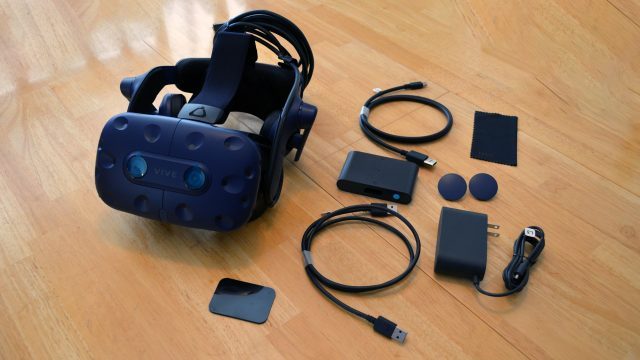
That said, without considering price, it’s a headset you’d reach for every time over the original Vive thanks to its notably sharper image, and a few new features which make it more convenient and comfortable to use.
As usual, we’ll start with a general summary up top, and then expand into a deep dive further down.
Vive Pro Headset Review Summary
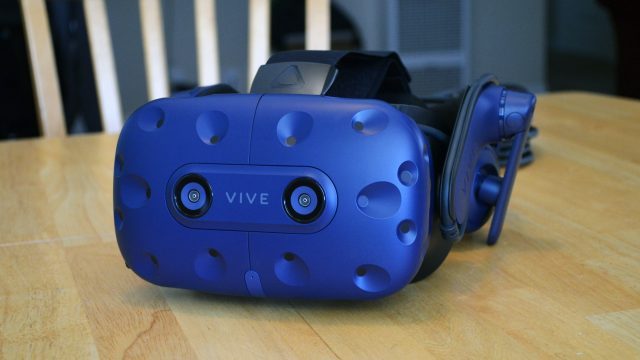
The Vive Pro is a hop but not a leap from the original Vive. The increased resolution makes everything notably sharper, and amplifies the stereoscopic effect. Smaller text is much more legible which is great for certain use-cases like virtual desktops and text-heavy games like Elite Dangerous. Textures are that much sharper and the extra resolution really stands out with highly optimized, well made VR experiences that are able to run at full settings. The screen door effect is also reduced (but not invisible), which further increases clarity.
Because the Vive Pro is using the same lenses as the original, everything (good and bad) carries over. It’s the same 110 degree field of view as before, same God Rays and Fresnel ring artifacts, and unfortunately the same small Sweet Spot. The latter is especially unfortunate because the heightened resolution almost seems to make it more noticable. It becomes apparent that the blur introduced when you aren’t looking perfectly through the center axis of the lens is making much of that extra resolution useless. The small Sweet Spot won’t spoil VR gaming too much, but for use-cases where finer details are important (like virtual desktop usage, text-based apps, and design), it becomes an annoyance. Make sure to get your IPD measured and dialed in precisely to avoid the pitfalls of the small Sweet Spot as much as possible.
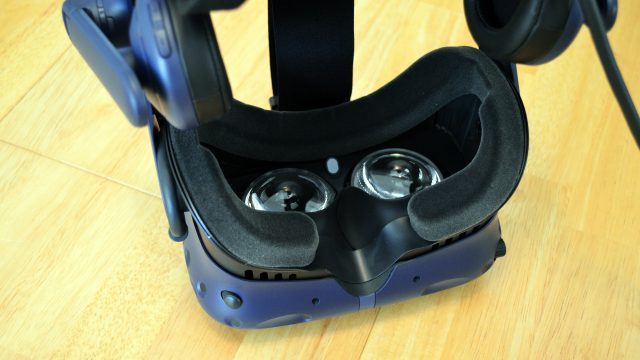
At first glance, the Vive Pro’s design looks a lot like a simple reskin of the original Vive and Deluxe Audio Strap accessory. Looking closer, it’s actually a more substantial redesign. The sensor placements have been tweaked, there’s now a dual-microphone, and the mechanism for adjusting the lens-to-eye distance has been substantially improved. There’s also now a stereo camera pair, though its functionality is sorely lacking, as it doesn’t even yet support stereo passthrough video, let alone hand-tracking, or any other interesting functions.
The redesigned head mount is more comfortable than ever, and I had no problem (after experimenting with the fit to get it just right) comfortably using the headset for multi-hour VR sessions. Compared to the original Vive’s default soft headstrap, the Vive Pro headmount is a major improvement especially thanks to the on-board audio. Unfortunately, the Vive Pro headphones are presently crippled with a “known issue” which has them missing out on a lot of bass tones. HTC says a fix for that is in the works, and you can remove the Vive Pro headphones and substitute your own if you wish. I hope the headphones get fixed sooner rather than later, as the volume and mic-mute buttons on the back of them are a useful touch.
One of the biggest draws of the Vive Pro, and perhaps the only element of the headset that truly makes sense of the “Pro” branding—SteamVR Tracking 2.0, bringing support for much larger tracking areas—still isn’t available since HTC isn’t yet selling 2.0 base stations or controllers. They plan to make them available later this year, but the price is unknown. In the meantime they’re asking people to instead drop $300 on 1.0 base stations and controllers, presumably to be replaced later down the road. That means that they’re asking $1,100 for a not quite fully-functional version of the Vive Pro.
The Vive Pro brings nice improvements, but when you zoom out and look at the (current) difference in experience between the original Vive and the Vive Pro, it’s hard to make sense of the asking price—even for the enterprise/commercial demographic, since they can’t currently make use of the headset’s (eventual) larger tracking volume.
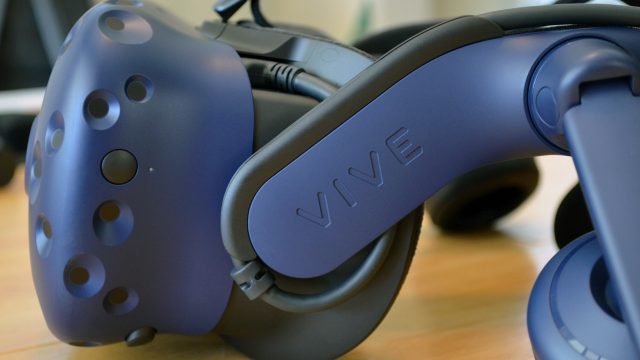
A ‘pro’ headset should definitely have best-in-class resolution, but it should be paired with ‘pro’ lenses too. Unfortunately the Vive Pro feels held back by the limitations of the original Vive’s lenses (which it borrows).
Maybe I’m just caught up in the regular progression of other sorts of consumer electronics devices, but two years after the release of the original Vive, the Vive Pro feels like expected progress which seems like it should have been priced—for the complete system, with 2.0 tracking base stations and controllers—no higher than the original Vive’s launch price.
– – — – –
Vive Pro Headset In-depth Review
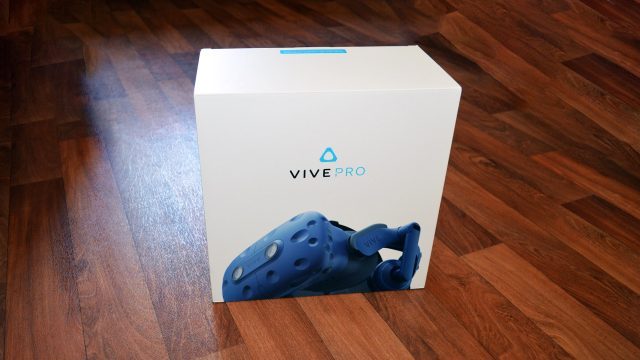
Display and Lenses
Resolution & Screen Door Effect
The biggest improvement to the Vive Pro is its new displays, which have been updated to 1,440 × 1,600 per eye from 1,080 × 1,200. That might not seem like a big change when represented that way, but if you consider the figures in Megapixels, its 2.3MP per eye vs. 1.3MP, roughly a 77% increase in the number of pixels in each eye.
Looking through the headset, it’s a hop—but not quite a leap—in resolution. Everything looks notably sharper and clearer. Text is one place where the improvement is very tangible, with text becoming legible at distance where it would previously look like a shimmering mess. Jumping into Bigscreen to feel how the resolution would benefit the ‘headset-as-a-monitor’ use-case, I was quite impressed with how close the Vive Pro’s resolution is coming to the experience you’d get from a 1080p monitor sitting on your desk. The resolution isn’t there quite yet for a full monitor replacement, but it’s becoming increasingly realistic to work in VR at such resolutions.
Another place where the Vive Pro’s new resolution really shines is on highly optimized and well textured content. I was tempted back into Valve’s The Lab (2016) and felt like I was looking at some of the game’s subtle details with brand new eyes, like the wall of gauges in ‘Aperture Science Robot Repair’ (next to the drawers) and the birds flying high over ‘Vesper Peak’.
The boost in resolution doesn’t just make textures and text sharper, it also enhances the 3D effect. Since well defined edges are such a strong queue for our stereo vision, and the increased resolution sharpens the edges of geometry, it’s easier for our eyes and brain to see what’s in front and what’s behind, leading to an increased sense of 3D that doesn’t go unnoticed.
Screen Door Effect and Mura
The Screen Door Effect on the Vive Pro is reduced, but not gone. The reduction feels roughly in line with the increase in resolution. The reduced Screen Door Effect means that you won’t see quite as much of that black grid-like appearance across the image, though, as always, it will stand out on some colors more than others, and in dim or dark scenes you’ll hardly be able to tell that it’s there. Generally speaking, where you could pick out individual sub-pixels on the original Vive, they are just about gone now on the Vive Pro. On the Vive Pro, individual whole pixels are about as about as difficult to see now as sub-pixels were on the original Vive. That is to say, you’ll see be able to see clumps of pixels if you look intently for them, but they’re getting harder to see, and won’t bother you much unless you’re looking at solid color textures.
Mura on the Vive Pro is mostly unobtrusive, but not invisible. It’s most visible in darker scenes. The amount of mura feels about equal to what you see on the original Vive, so no major regression or improvement there.
God Rays and Sweet Spot
Given that the Vive Pro is using the same Fresnel lenses as the original Vive, it’s not surprising that the God Rays are just as present as ever. They look like streaks of fuzzy light that extend out of brightly colored objects and move relative to your head. When visible, the God Rays also frequently illuminate the ridges of the lenses, worsening the artifact. God Rays are most visible in scenes when there’s a mix of high contrast bright and dark elements. Lower contrast scenes (either mostly bright or mostly dark) hide the God Rays better.
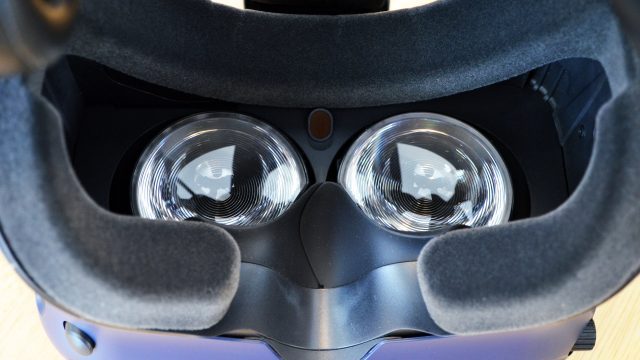
Again due to the same lenses, the Vive’s notoriously tight Sweet Spot (the area of maximum visual clarity through the lens) returns to the Vive Pro. Outside of a small area toward the center of the lens, the image becomes increasingly blurred. If you don’t carefully align the headset to your eye, you’ll see a blurrier image than you should, and even turning your eye slightly during use may have you looking through a blurry part of the lens. During typical VR gaming this isn’t too much of an issue, but for tasks requiring more detail (especially reading text), the small Sweet Spot becomes quite apparent.
Keeping both eyes in the respective sweet spot of each lens is particularly challenging, and with the Vive Pro I found myself regularly making small adjustments to try to keep my eyes in the right position. Knowing your IPD (the distance between your eyes) and dialing it in on the Vive Pro’s IPD adjustment is essential to achieving maximum image clarity, so next time you’re at the optometrist, ask for a precise measurement. HTC says that the IPD adjustment range on the Vive Pro is identical to the original Vive (about 60mm to 73mm). If your IPD falls outside of that range, you’d be especially prone to being bothered by the small Sweet Spot.
The increased resolution of the Vive Pro almost has the effect of amplifying the tiny Sweet Spot because the resolution through the center is sharper than before, but the blur makes clarity drop off quickly any time you are looking off-axis (which everyone does naturally). When I was testing the Vive Pro by using Bigscreen as a computer monitor, I was naturally inclined to use my eyes to scan along a line of text, but found that I had to to turn my head (to center my eye to the Sweet Spot) to achieve the clarity I wanted even when I was looking just a few degrees away from the center of the lens.
Field of View, Flicker, and More
Given the same lenses, the field of view on the Vive Pro is unchanged at 110 degrees, according to HTC. If you’ve used a Rift, Vive, or PSVR—the Vive Pro is right in that same class. If not, you can expect an immersive view that’s far wider than what you’d expect from a typical TV or computer monitor. It’s enough to get you well immersed in the virtual world, though it won’t completely encompass your vision.
As for flicker, I couldn’t spot any, and I never could with the original Vive either. Both use a 90Hz low-persistence display, so not too much surprise there. Persistence blurring was hard to assess because it was overcome so quickly by the blurriness of the small Sweet Spot, though again, at the same refresh rate and low-persistence display, expect the same as the original Vive. As with the original Vive, the Vive Pro does a great job of sealing off all light coming into the headset.

